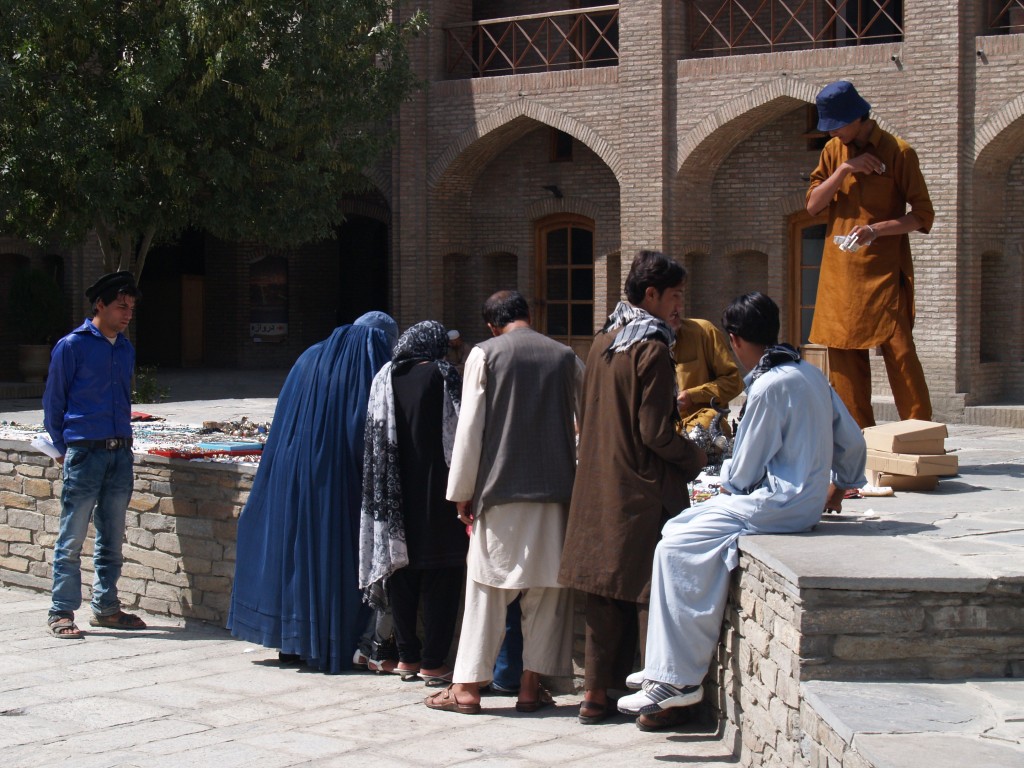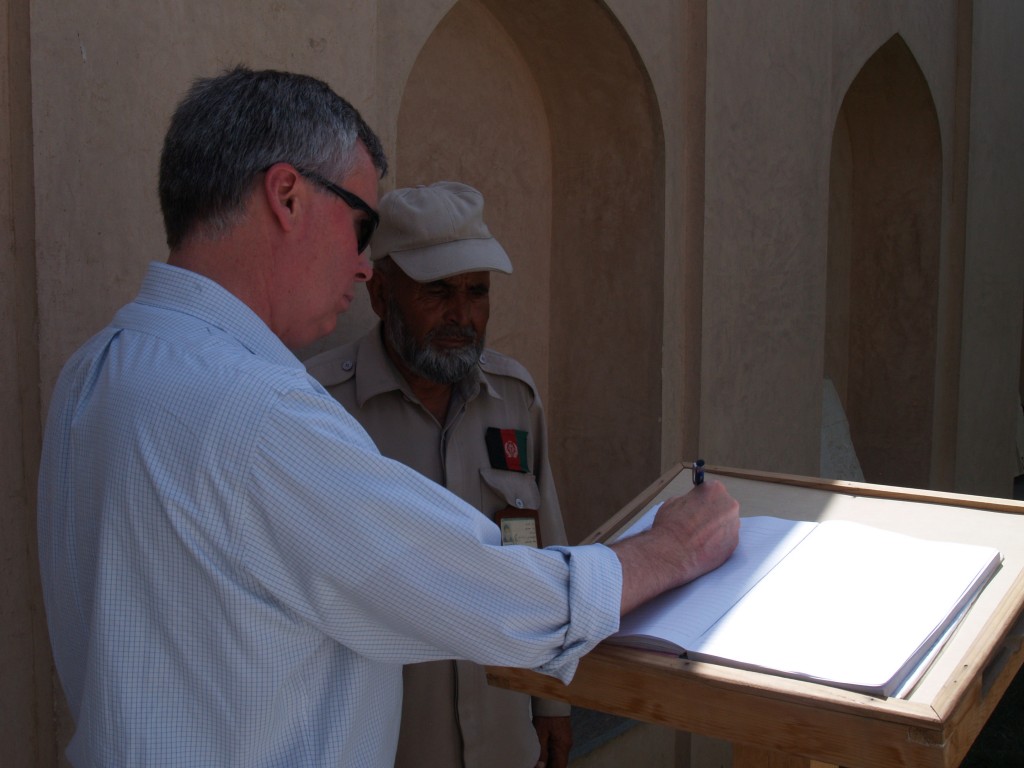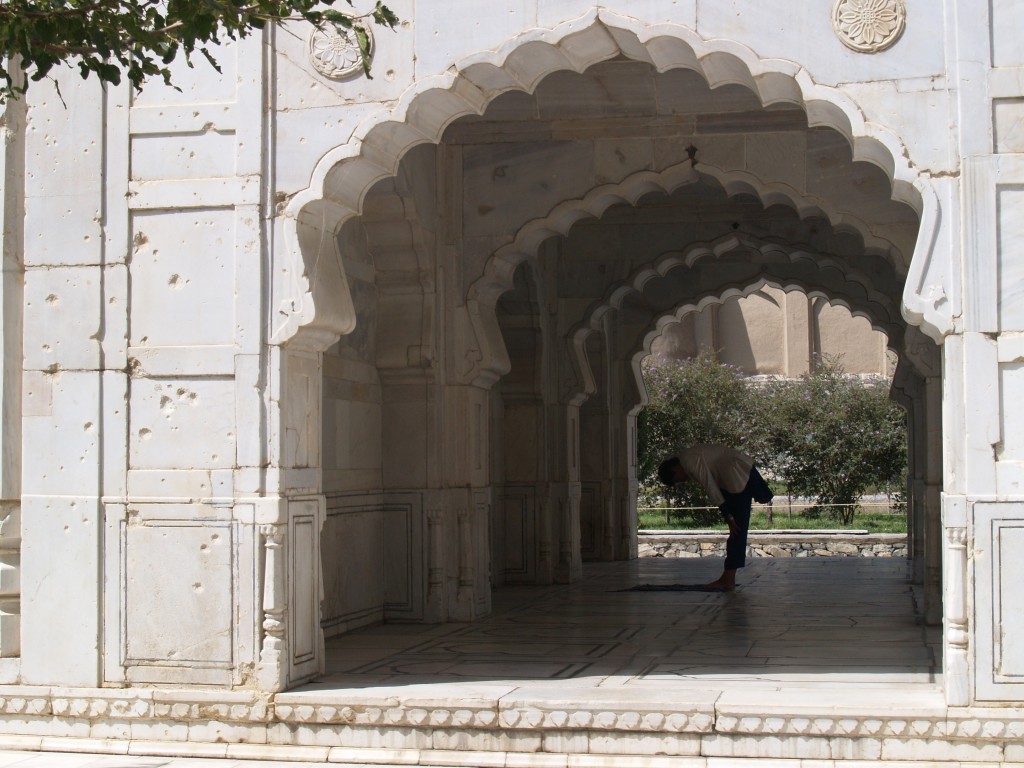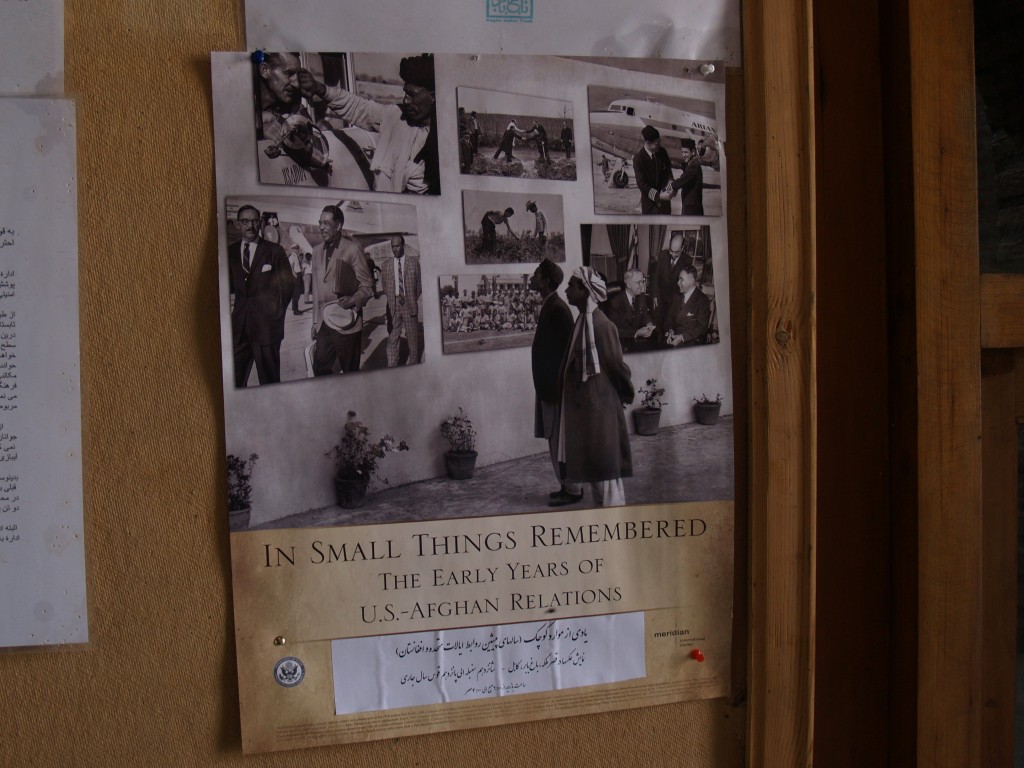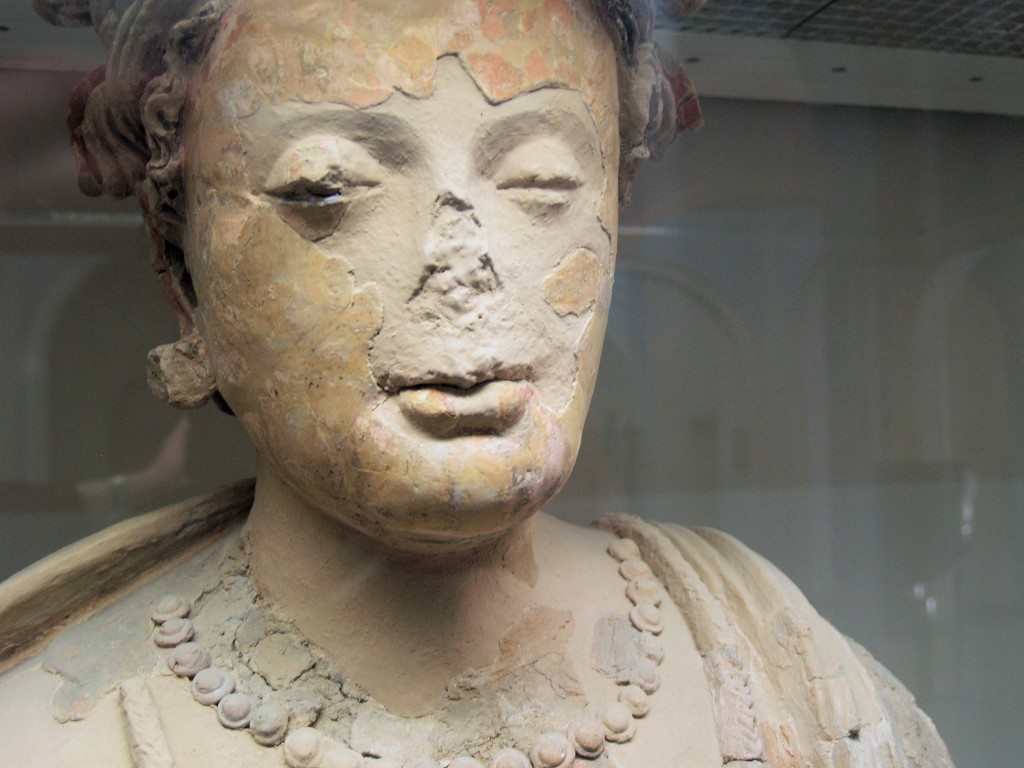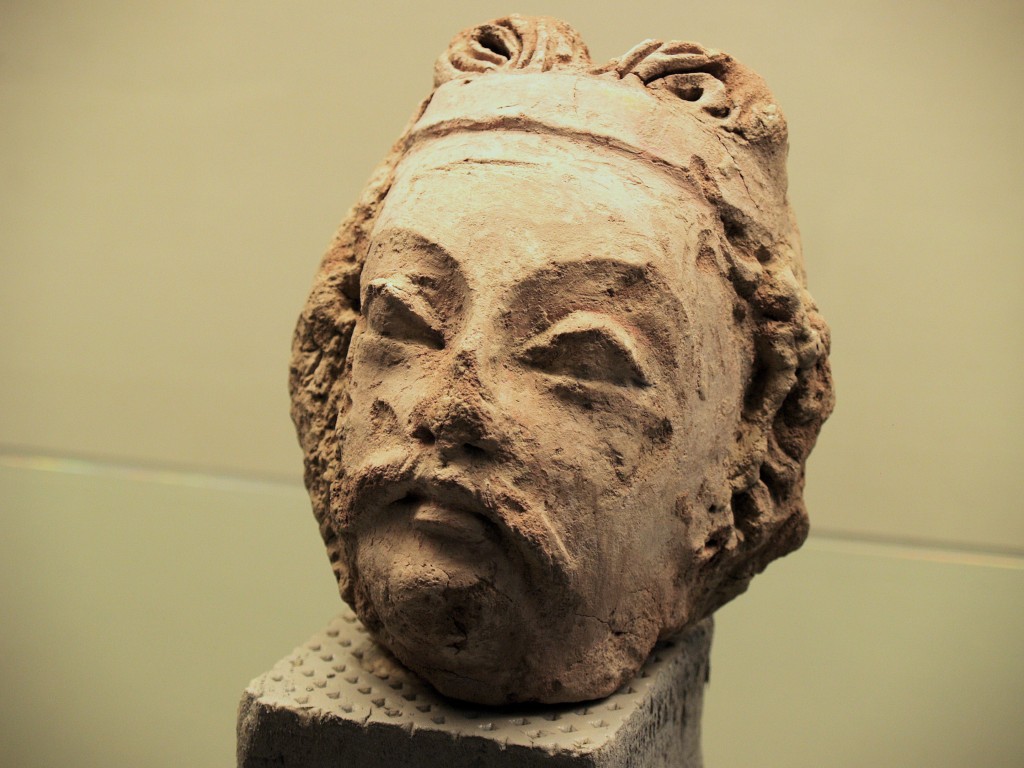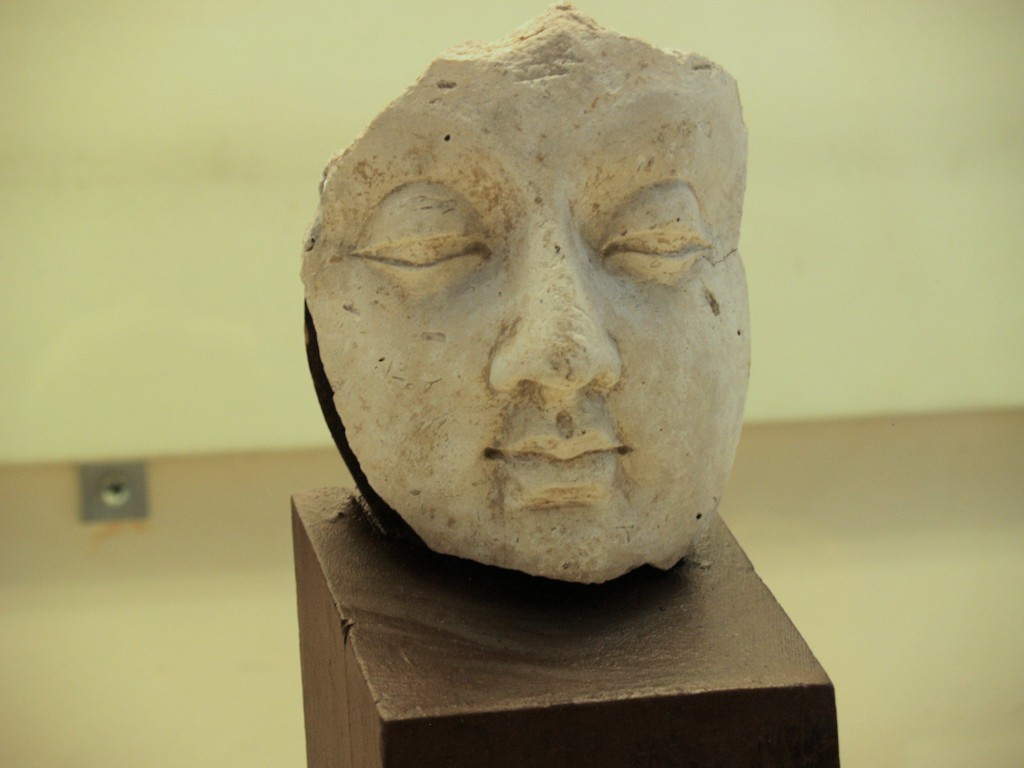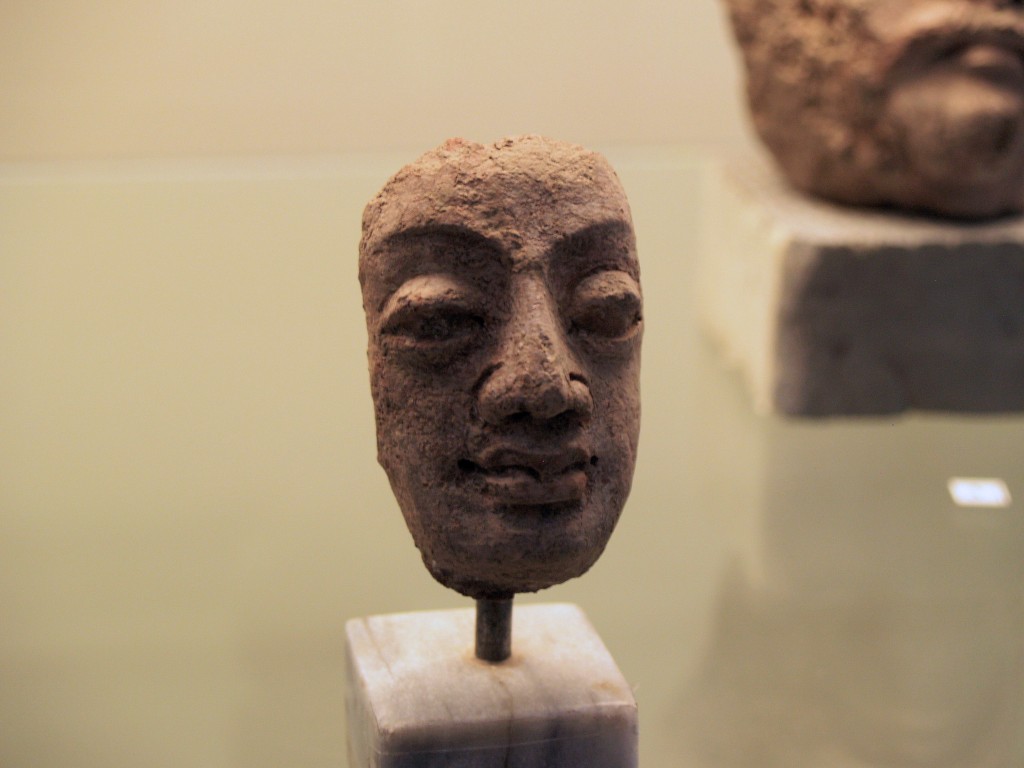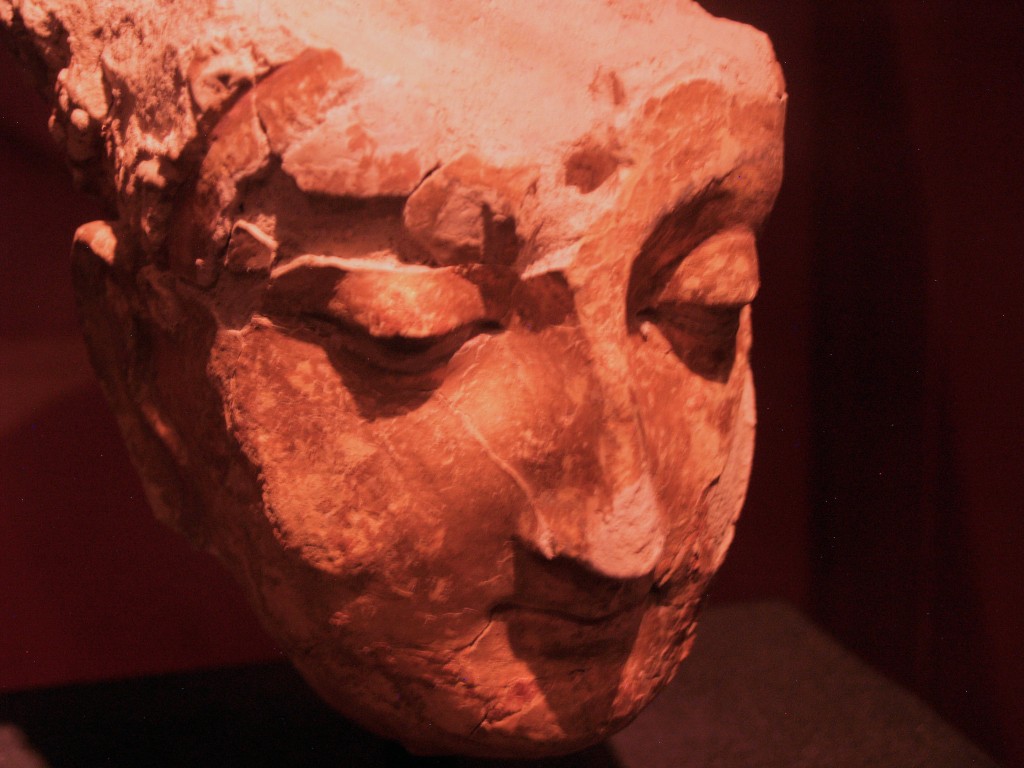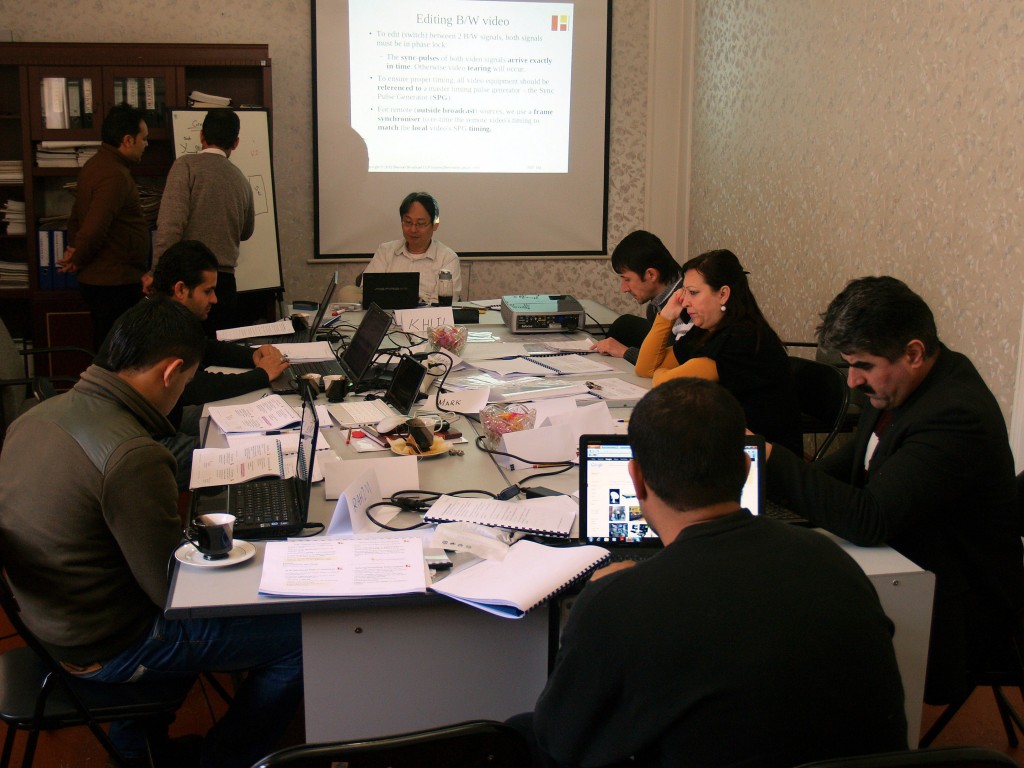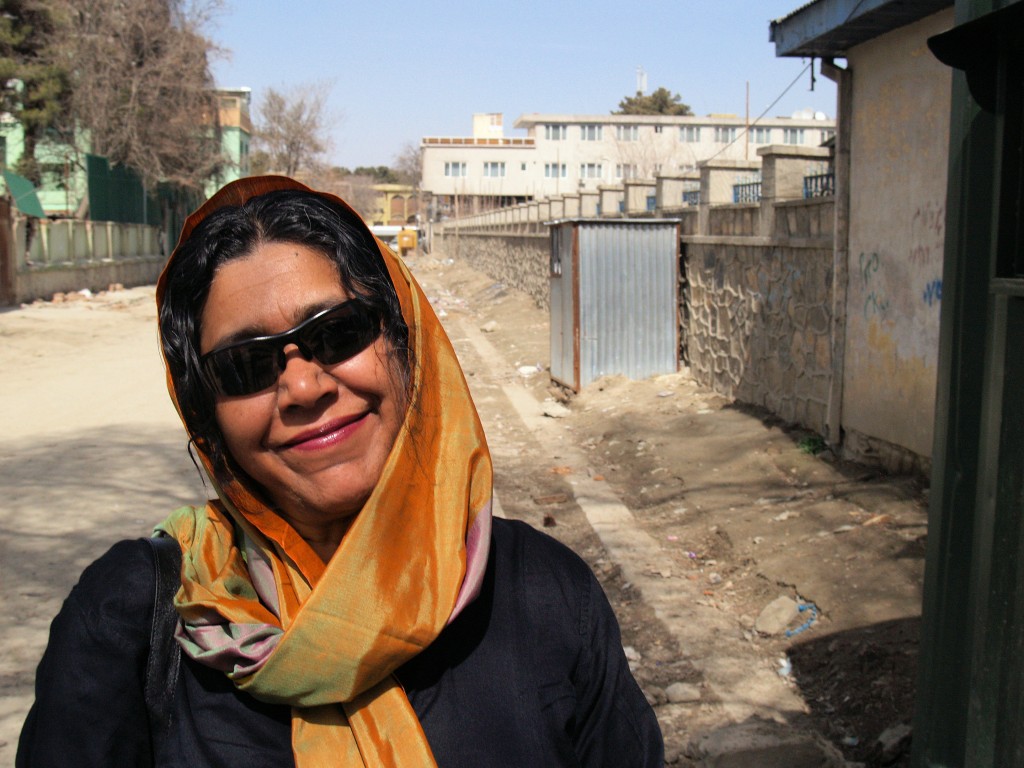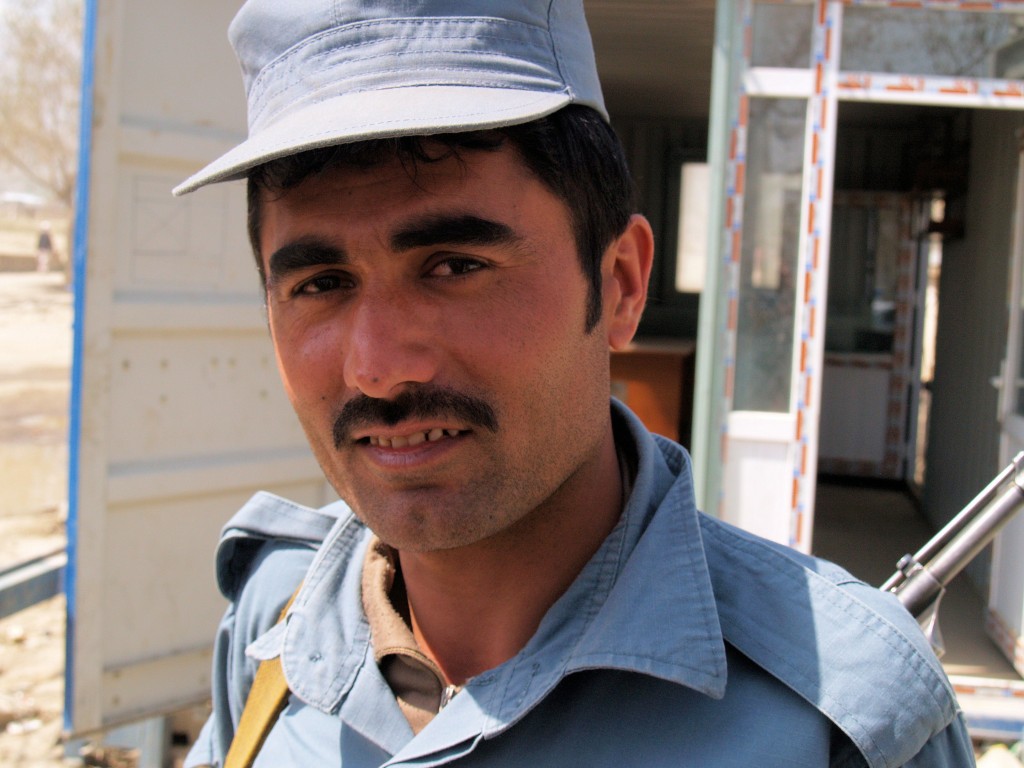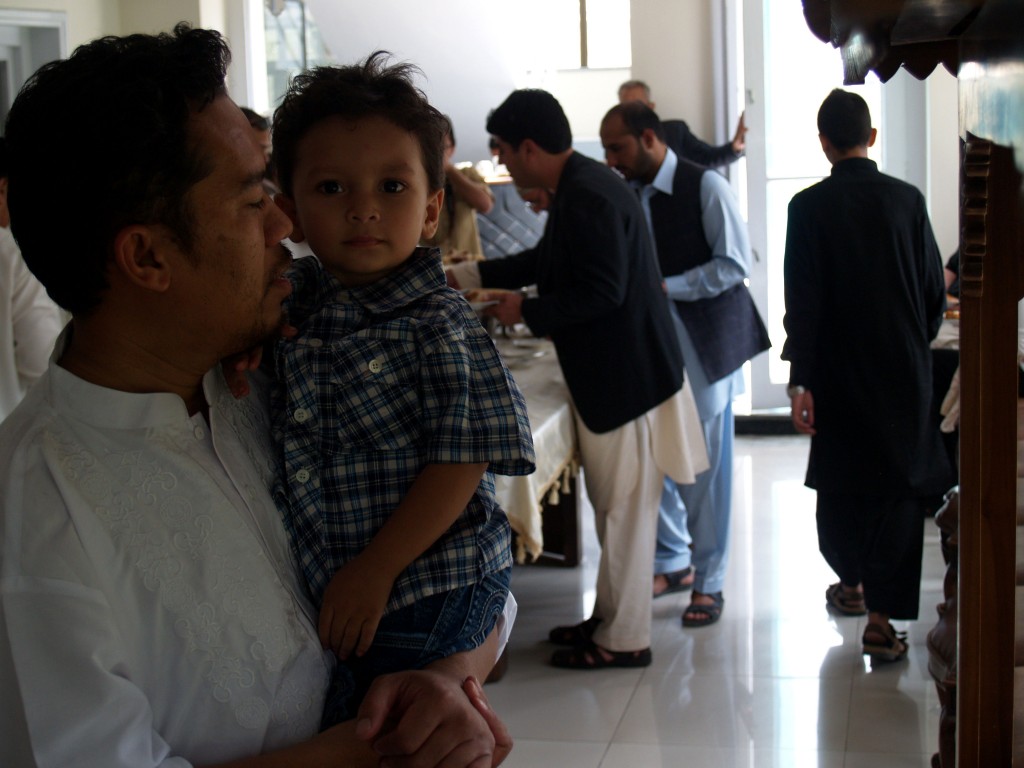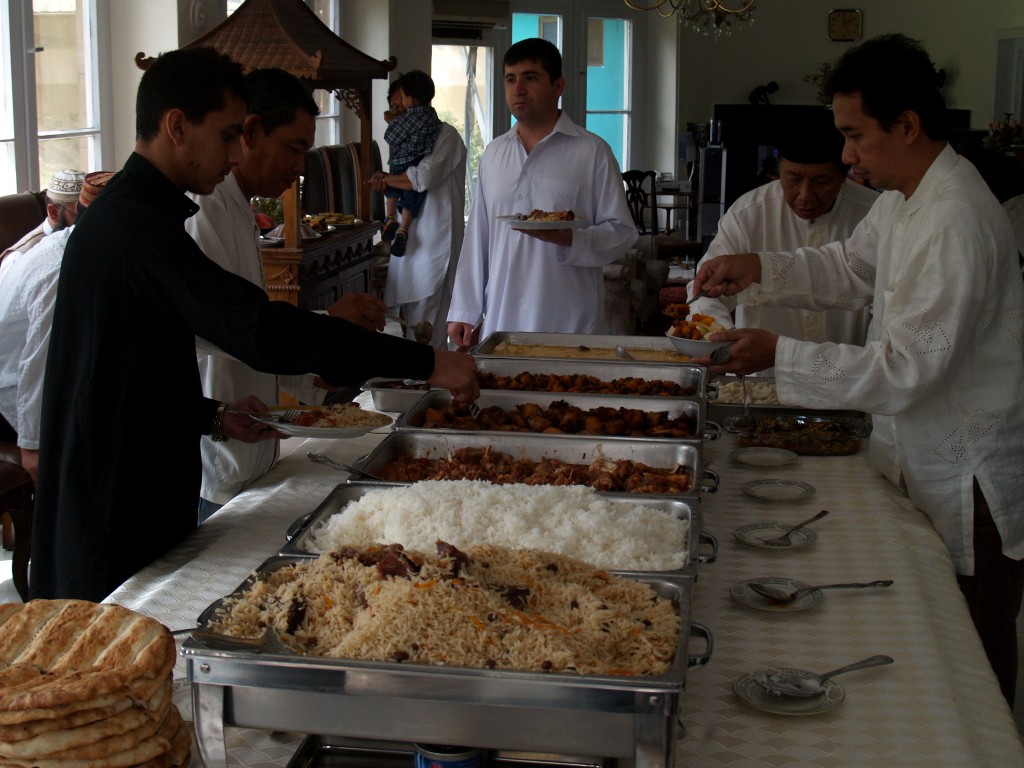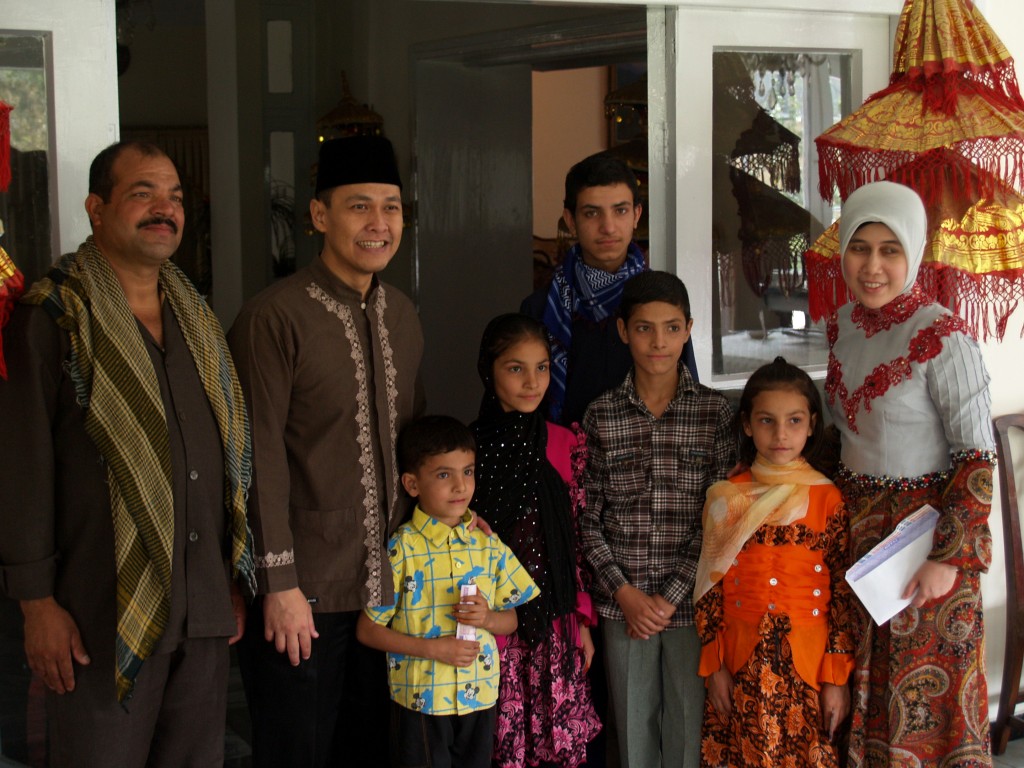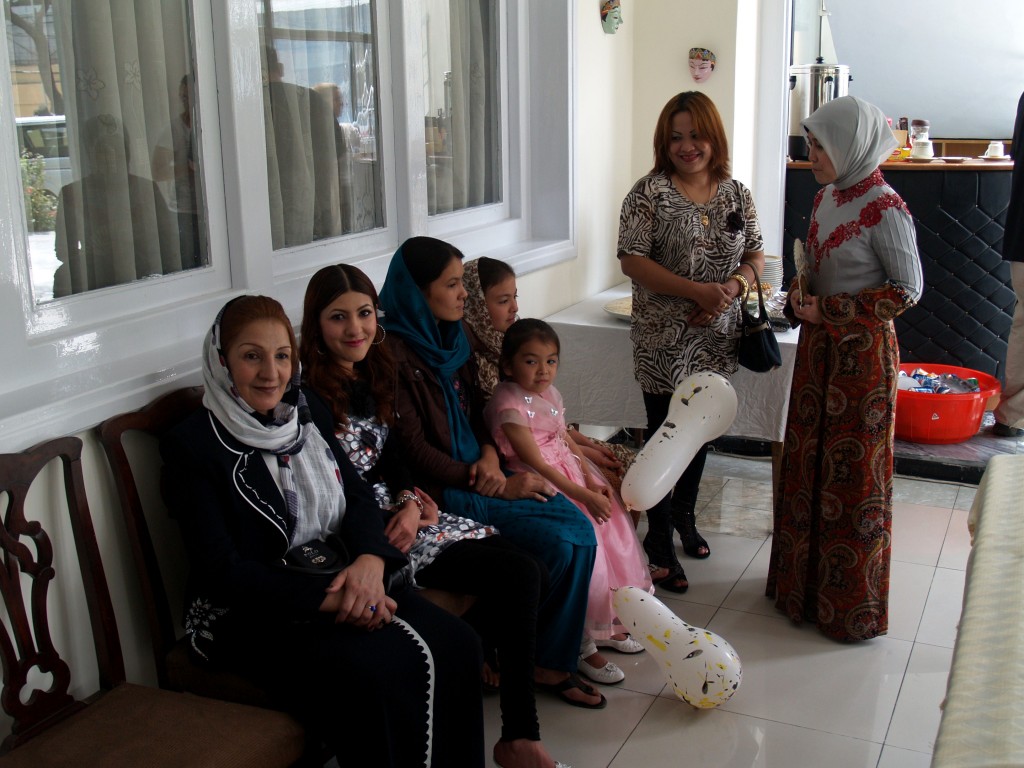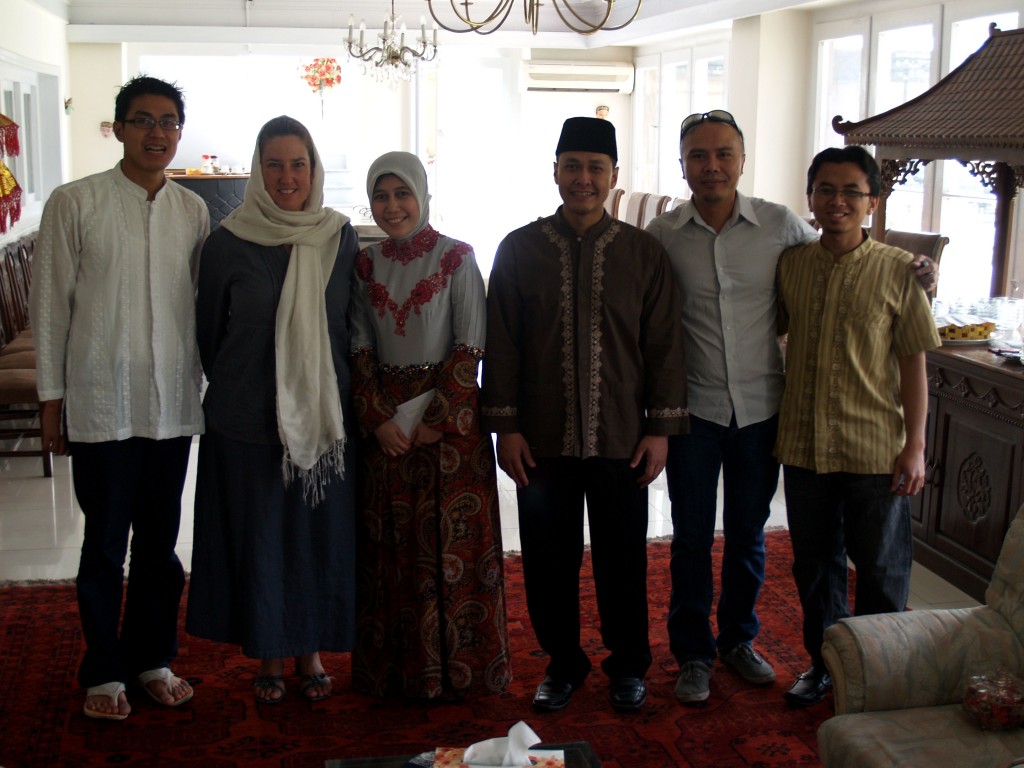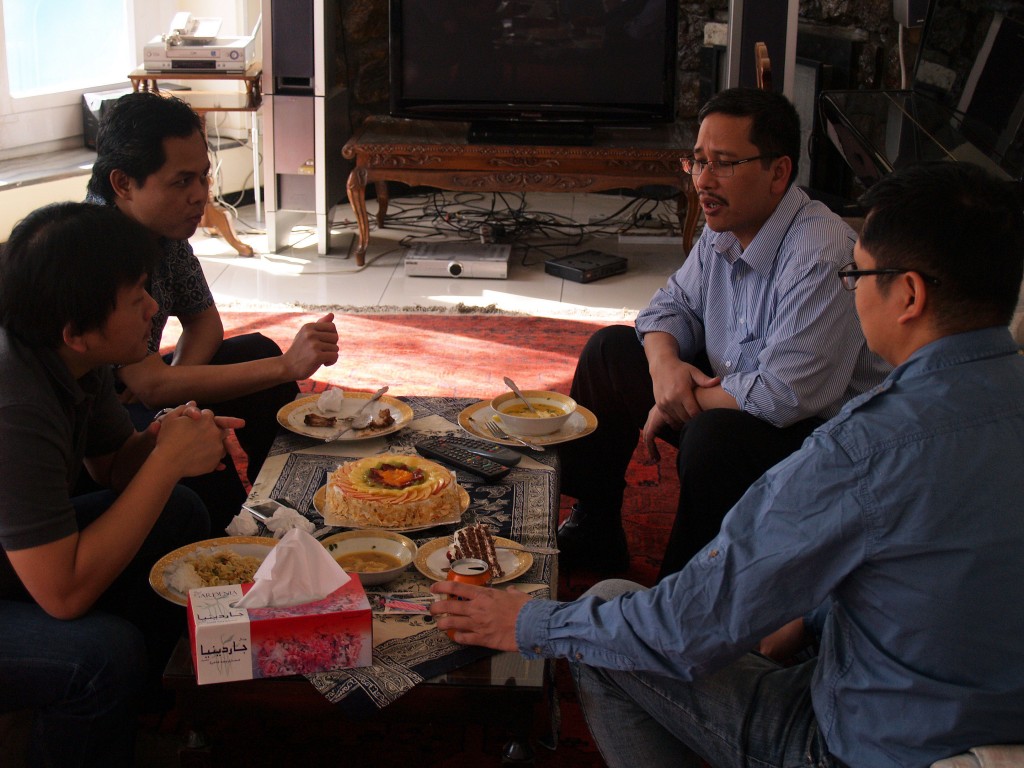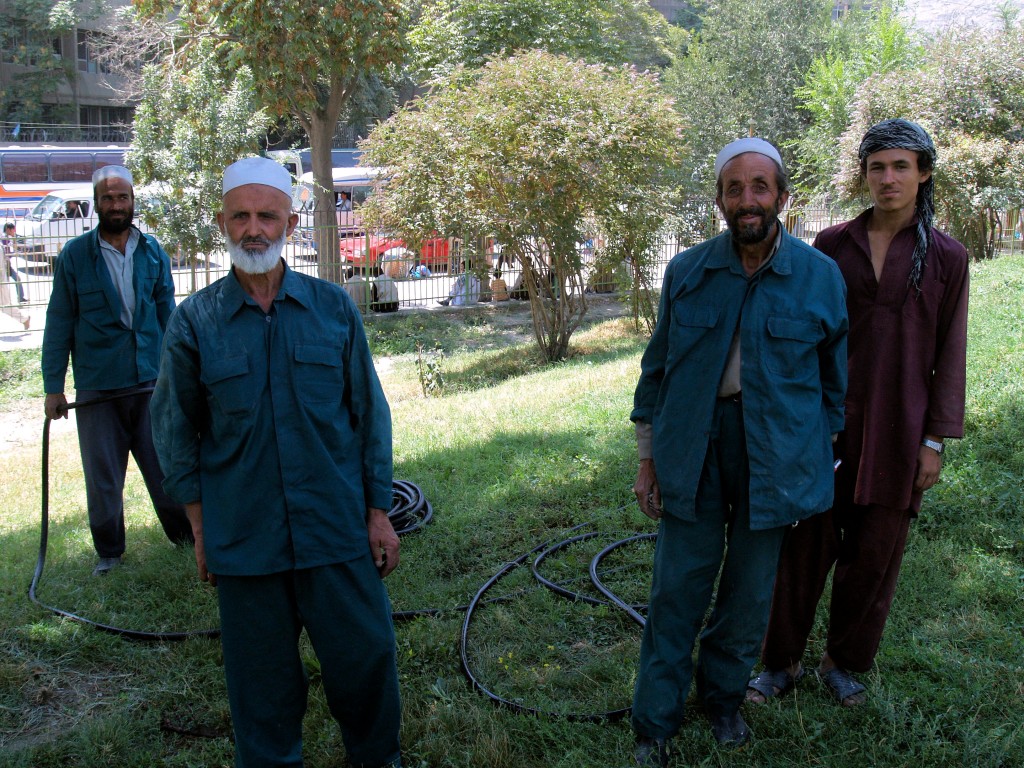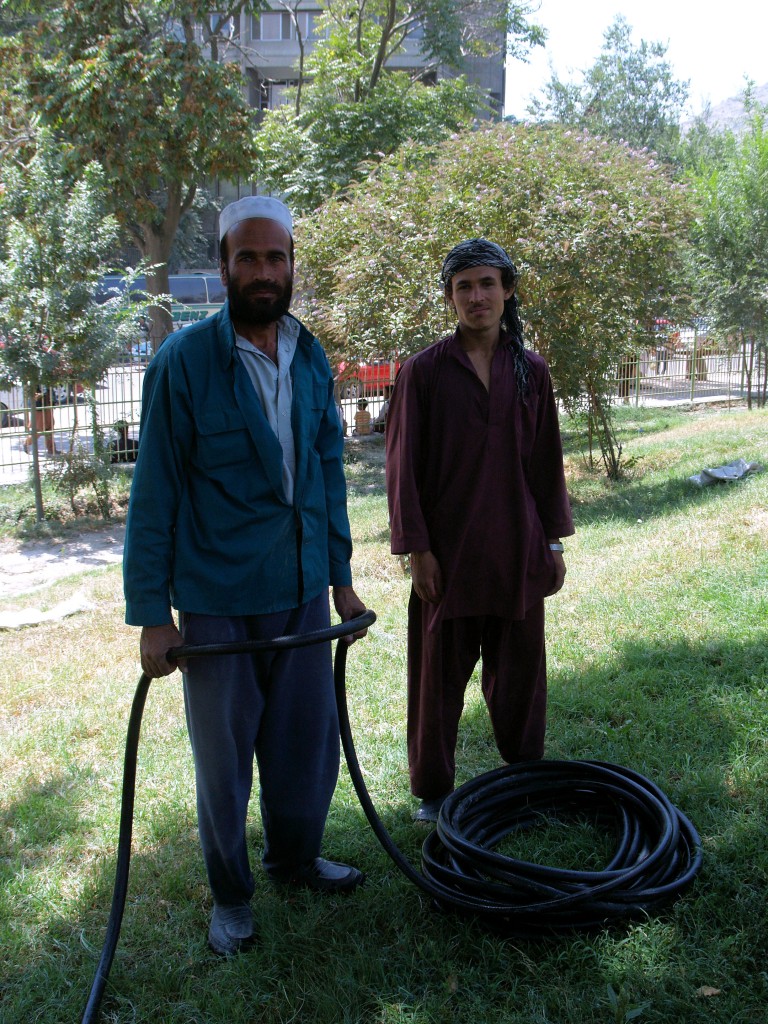Some interesting clips from last week’s trip to Jaipur. For the sounds of some Rajasthani musicians and singers (and the sounds of traditional dancing) and for a trip to the Govind Devji Temple, pop over to the Wild Sound page. These newest recordings appear at the top of the list.
Author Archives: Mark Timpany
Bagh-e Babur
The first Mughal emperor was Ziihir ad-Din Muhammad Babur, usually shortened simply to Babur. His life is well documented in his memoirs, the Baburnama.
Bagh-e Babur is a spot of green in the midst of Kabul. This is the final resting place of Babur. Much more modest in scope than the tombs of his issue, there is a quality found here that is lacking in the grand mausoleums like Humayun’s Tomb in Delhi. (Humayun was Babur’s son.) The comparison between these two UNESCO World Heritage sites is striking. While the tomb of Humayun is quite impressive, the grounds don’t serve as a place of refuge away from the urban activities in the manner of Babur’s Garden.
Torn between shopping and a visit to Bagh-e Babur? No worry. There is shopping to be had right at the entrance.
The tomb is simple but elegant. You will get a brief history lesson in Dari or English from the docent here.
The guest book is filled with many positive references to visits to these grounds.
The shrine adjacent to the tomb was built by Shah Jahan, another descendant of Babur. Shah Jahan is better known for the Taj Mahal in Agra. The same white marble is used here with the addition of bullet holes from the time of conflict in this area.
The shrine is still used for worship along with representing an important architectural element of Afghanistan’s history and culture.
My first visit to Bagh-e Babur provided a bonus. There was an excellent collection of photographs documenting the early years of Afghan/US relations. There were photos of Mohammed Daoud meeting with Richard Nixon, Eisenhower’s arrival at Bagram, the King Zahir Shah’s motorcade with President Kennedy, as well as cultural exchange involving Duke Ellington and Dave Brubeck. I don’t know if this collection is still being toured but it is highly recommended if it is displayed near you.
You should be able to find more details on this wonderful collection of photographs at the Meridian International Center web site.
The Museum with a Thousand Faces
The Taliban put a lot of effort into destroying human images and the collection at the Kabul Museum suffered greatly as a result. There is, however, still an incredible collection of Buddhist materials that have survived 16 or 17 centuries which will make a trip down Darul Aman Road worthwhile.
There is even a miniature reproduction of one of the giant Buddhas at Bamiyan that were lost to the world in March of 2001. Take a look over your shoulder as you are purchasing tickets for admission.
Picture Me at Bagh-e Babur
Beyond Broadcast in Dushanbe
The technical team was very experienced in all things radio. The practical aspects of television were still mysterious. Fortunately, there is a training and consulting company in Singapore, Beyond Broadcast, that continues to provide their one week intensive course in “PAL (Analog) Engineering Principles and Practice.”
Kit Siew and Siu Yin were not interested in conducting the course in Kabul. The pleasant alternative was Dushanbe. The photo above is the tech team in front of the largest landmark in Dushanbe, the Somoni Monument on Rudaki Avenue. Dushanbe was a convenient site for the team from Kabul and provided the opportunity to spread the training to some of the Internews Tajikistan staff that are also involved in video production.
Far from being a course in obsolete technology, the grounding in analog television fundamentals is the best place to start even if the transition to digital is fast approaching. We had a chance to use GNUplot to explore quadrature amplitude modulation, saw numerous practical examples that developed an appreciation of PAL quality standards, and got hand-on experience with our own test equipment. We came back with the course materials in soft copy with permission from Beyond Broadcast to present the materials to other Internews or community television staff who otherwise could never access this information.
Internews Dushanbe provided their conference room, logistics support, and generous hospitality throughout our stay.
The accommodations for the trip were quite spacious but the building exteriors betrayed their Soviet design and construction.
The Decisive Moment
“The decisive moment, it is the simultaneous recognition, in a fraction of a second, of the significance of an event as well as the precise organization of forms which gives that event its proper expression.” – Henri Cartier-Bresson
The significance of the moments pictured here is the ability to determine whether that which is in the camera bag is really a camera. The conclusive test is to use the camera to take a photo and see the results on the rear LCD screen. This would be impossible with Henri Cartier-Bresson’s Leica. Given the compact size of this rangefinder camera and the explosive materials available at the time, however, the Leica could not have posed a serious danger.
I am starting a collection of photos taken at the request of security personnel when they wish to verify that my camera is capable of taking pictures.
The first one appears in ‘Kedutaan Besar Kabul’ and was taken at the entrance to the street where the Indonesian Embassy is located. The Indonesian Embassy is adjacent to the Indian Embassy which is the real security issue.
Next we have a photo of the guard at the gate of the Kabul Museum. I must say these photos turn out well. They are not candid in the manner of Elliott Erwitt but there is not much time for posing either.
Sometimes the subject just doesn’t want his picture taken. Or maybe he is not yet convinced that this is a camera. The photo below is from a subject more camera shy.
I will be adding to this page when I have additional requests from various security personnel.
Afghanistan – touch down in flight
I discovered this marvelous film – – video actually, though it has very filmic qualities – – over at the blog Afghanistan On My Mind (http://afghanistanonmymind.blogspot.com/), a blog that concerns itself with Afghanistan as does this one. You can watch it at vimeo.
Here is the web site of the creators Lukas and Salome Augustin;
The video is offered in HD so may not be watchable in real time with typical Afghanistan bandwidth. A download would net you about 112 MB. This is five minutes of material for which high definition is worthwhile. Highly recommended.
Kedutaan Besar Kabul
The Indonesian Embassy in Kabul offers a sample of the culture of the archipelago in the middle of Kabul. If you know a member of the small community of Indonesians living in Kabul you may have the pleasure of an invitation to the Embassy for dinner or perhaps a game of volleyball. This is the only place in the city to sample authentic Indonesian food with spices brought in by those shuttling between Afghanistan and home.
The photos here bring back memories of Jakarta.
Indonesians do well in front of the camera.
Afghans are not adventurous eaters. A tray of Kabuli Pulao and a stack of naan is there for those that don’t want to stray too far from the norm.
Some of our hosts and Jennifer Glasse who is now found on Al Jazeera.
Most everyone likes Indonesia and Indonesians. However, the Embassy is located next to the Indian Embassy which continues to be a popular target for attack. I had to take this photo to show that what was in the camera case was really a camera. This photo turned out quite well.
Seating at an Indonesian gathering may consist of chairs lined up at the edge of the room.
The sweets table always bears scrutiny.
Zarnegar Park
I did some correspondence blog-to-blog when I ran across a posting with photos of Zarnegar Park from the ’70s. Here’s the way things looked the first two times I was in Afghanistan;
http://afghanistanonmymind.blogspot.com/2011/10/zarnegar-park-in-kabul.html
I’m not sure it’s possible to get photos from the same place as the ones that ‘Afghanistan On My Mind’ used but I hope to get some shots from a place where it is possible to see the before and after layout. The Adbul Rahman Khan Mausoleum (above) might be the only identifiable element after forty years.
My favorite photos from my one day of photo activity on the grounds are of some of the groundskeepers. Like most other (male) Afghans they wanted to have their picture taken. They must have recognized that they were good subjects for the camera.
Solo Photo Book Month – sofobomo.org Has Left The Building
Solo Photo Book Month was one of the most clever photography projects on the web. It is gone now. A creation of Paul Butzi, it survived from 2008 until 2011.
On 2 October 2011 this was posted on Twitter;
“SoFoBoMo is closing. Many thanks to all our friends, volunteers and participants. For a longer statement visit: http://www.sofobomo.org/HomePage”
The concept was the creation of photo books of 35 or more images/pages that was done in a flex month each year. The flex month was a one month period picked by the participant from the two month period picked for that year. The SoFoBoMo photographers assignment was to produce a photo book during a one month period within those two months.
It might sound easy or it may seem incredibly difficult but it was a great assignment for honing photographic and production skills. There were a lot of excellent photo books created and available as PDFs each year at sofobomo.org at the end of the flex month. Participants were scattered all over the globe.
The web presence of Solo Photo Book Month is now limited to whatever remains on the participants web sites. What I produced in 2010 is probably typical. The themes picked by the participants vary so widely that no single Solo Photo Book can be said to be representative.
I chose to do all my photography at Prescott, Arizona’s “Tsunami On The Square” and the resulting book had this as a cover page . . .
The full photo book, as previously found at sofobomo.org, is now available only here . . .
If you Google “sofobomo” you can turn up more of these photo books.
If you would like to take a look at some of the written output from Paul Butzi, that can be found at http://www.butzi.net/articles/articles.htm. I think it was his article that reviewed the Zone VI (Fred Picker) modifications to the Pentax Spotmeter that led me to discover what was going on with Solo Photo Book Month.

